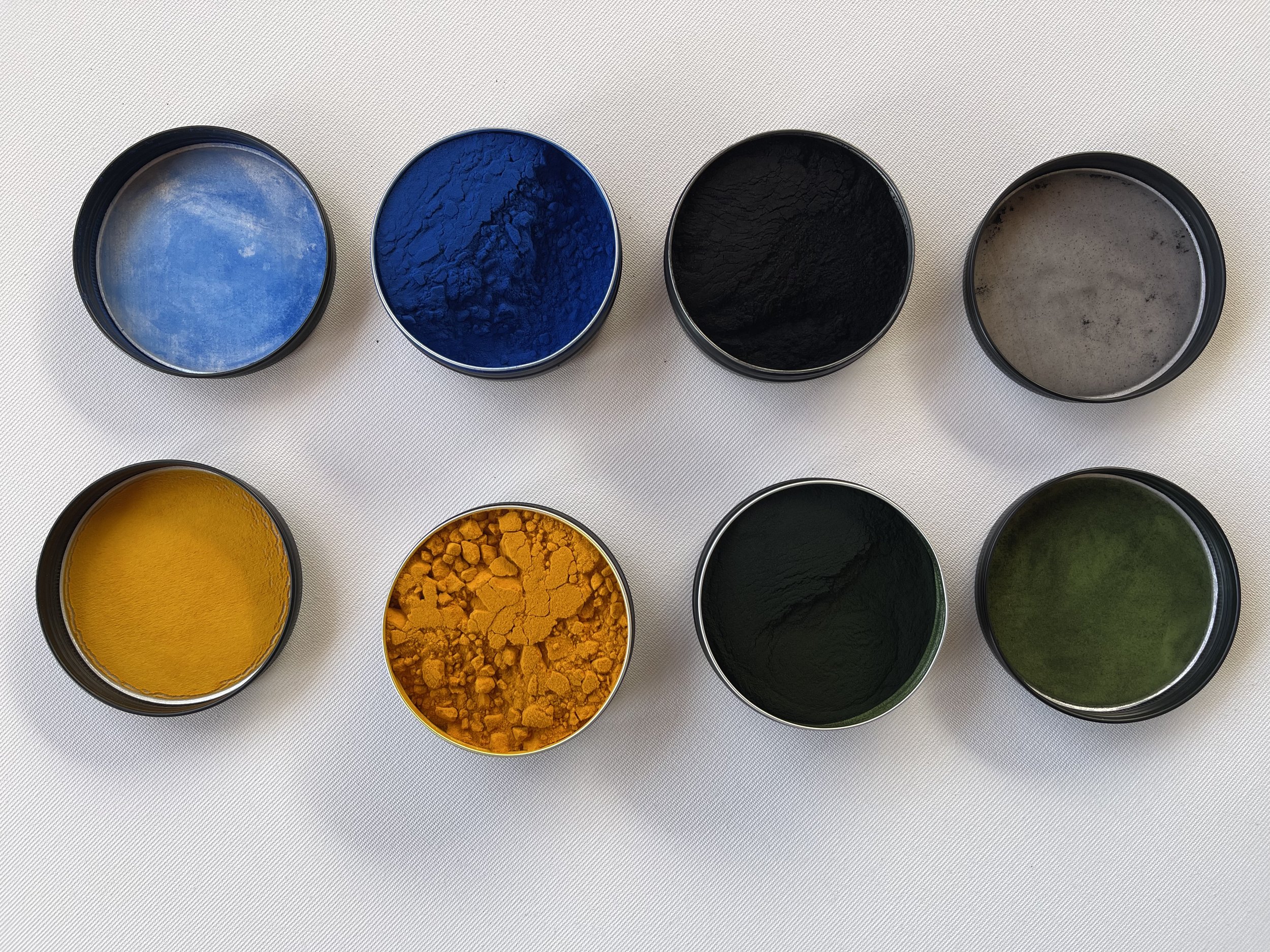Placrylic™ is a patented sustainable plant paint that, like behaves like traditional oil paint in that artists can work in layers. However, unlike oil paint, which typical requires titanium white paint and has a negative impact on ocean chemistry when washed down the drain, placrylic is 100% titanium free, marine friendly, and safe for use by artists
Plant Paint
Placrylic is a patented artist paint invented by English Painter and Chemist, artist hana. Placrylic paint is made using plant pigments, derived sustainably from food waste, dried plant waste, pest plants and hardy plants that thrive in harsh conditions.
Placrylic™ behaves like traditional oil paint in that artists can work in layers. However, unlike oil paint, which typical requires titanium white paint and has a negative impact on ocean chemistry when washed down the drain, placrylic is 100% titanium free, marine friendly, and safe for use by artists
Placrylic behaves like acrylic, in that it is fast drying, hardens when dry, however unlike acrylic, which also releases cancer causing chemicals like formaldehyde into the air, it contains zero plastic.
Placrylic pigments are extracted from the leaves of edible plants
Acrylic paint, a thermoplastic is typically made by mixing earth pigments into a synthetic polymer emulsion. Placrylic, a plant paint is created by combining plant pigments with a 100% plant emulsion
In the 1960s, artists began to use a range of new paints that changed the possibilities of painting, Andy Warhol used acrylic, a plastic synthetic polymer paint to create 32 canvas paintings of Campbell soup cans and David Hockney made extensive use of acrylic paint because he felt that a fast-drying substance was more suited to depicting the hot, dry landscapes of California than traditional oil paints
Both Hockney and Warhol, two brilliant painters, put their trust in paint manufacturers, who are obligated to guarantee the safety of chemicals employed by artists.
60 years on, there is scientific evidence about the negative impact of acrylic paint, which is essentially liquid plastic. When washed down the drain and into the ocean, acrylic, affects ocean chemistry and kills some sea plants and species of fish.
Artists and art lovers use acrylic paint every day to create paintings that evoke energy and beauty, paintings that heal, tell a story, or shed light on important issues we face in our current world
Because of its versatility and vibrant colour possibilities, acrylic paint is beloved by certain artists and art enthusiasts who are unaware of its negative environmental effects.
In 2020, English Painter and Chemist, artist hana invented the brand-new medium Placrylic for artists, that addresses the climate and health concerns modern artists are worried about
Placrylic is currently used by 34 highly sought-after emerging artists from 11 countries including the United Kingdom, USA, Canada, Germany, Italy, Israel, Nigeria, South Korea, Sweden, Netherlands and Belgium
Placrylic is a fast-drying paint made entirely of plants
Among seasoned art collectors the term, ‘acrylic shame’ is used in some circles who would walk away from a painting if it was made using acrylic. Some professional artists who are aware of the environmental concerns are so ashamed of using liquid plastic to paint that they have resorted to calling their acrylic work mixed media, the question is, how will art restorers be able to correctly restore liquid plastic paintings if work descriptions are not accurate?
The most accurate description of acrylic paint as Andy Warhol quite rightly described the Campbell Soup Paintings, is synthetic polymer, now that you understand that acrylic Is liquid plastic and the correct scientific name for acrylic is synthetic polymer, you are ready to understand what placrylic is. Placrylic is a plant paint
Painters are making art using placrylic, a natural plant-based paint that behaves similar to acrylic, fast-drying, hardens when dry, with vibrant colours, contains zero plastic and does not release cancer causing chemicals like formaldehyde into the air
The future of painting looks bright
Placrylic™ | plant paint
Placrylic Paint is made using plant pigments, derived sustainably from food waste, dried plant waste, pest plants and hardy plants, some of the oldest recorded in history, that thrive in harsh conditions
British Artist, Keith Coventry, uses Placrylic™
‘The black had a satisfying density and rich appearance and retained the impression of the brush stroke well. When mixed with the gel the potential for working wet on wet was good as the drying time was generous and works well on paper’
Keith’s Spectrum Jesus painting won the John Moores Painting Prize in 2010
artist hana invented Placrylic™ in 2020, during the lockdown when art supply stores were closed.
You save the world 3,900ml of liquid plastic*
*when you create 10 large paintings using just Placrylic™
You can use Placrylic™ on
Wood
Paper
Linen Fabric
Cotton Fabric
Linen Canvases
Cotton Canvases
Everything you need to know about Placrylic™ today
1. Placrylic is a sustainable plant paint derived from food waste and hardy plants
2. Placrylic is a sustainable luxury plant paint
3. Placrylic was invented by English Painter and Chemist, artist hana in 2020
4. Placrylic is a brand-new artist medium
5. Placrylic is a sustainable plant paint for artists and designers
6. Placrylic is a sustainable plant paint with patented formulations
7. 36 artists from twelve nations use placrylic to create masterpieces
8. 36 artists from twelve nations use placrylic to create sustainable luxury paintings
9. Placrylic paints are used by 36 artists to create sustainable luxury paintings
10. Placrylic paintings can be acquired from £10,000
11. Placrylic paintings translate well into sustainable luxury cushions
12. Placrylic paintings are available as limited-edition organic cotton cushions
13. Placrylic is a brand-new paint medium for artists and designers
14. For every placrylic product purchased, we plant a tree in areas where they are most needed
15. On November 16, 2022, the first ever placrylic art fair will be held at Middlethorpe Hall in York

